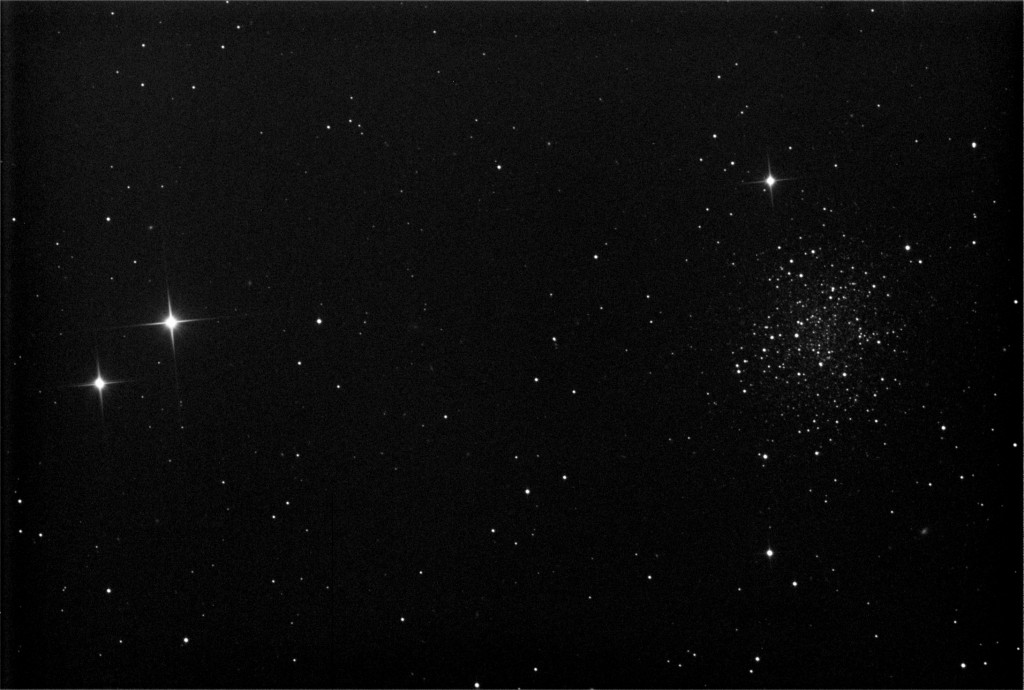The great English astronomer William Herschel first used the term globular cluster (derived from the Latin globulus – little sphere) in 1789. Globular clusters are, usually, very distinct. Thousands to a million stars packed into a tight spherical area is the defining visual characteristic. Located in the constellation Coma Berenices ( Berenices Hair) NGC 5053 doesn’t look the part of globular cluster, but numerous spectroscopic analyses show that it is. NGC 5053’s height above the galactic plane and the lack of metals in its stars also indicate it is globular in nature. In 2006, a study found a faint 6 degree tidal tail indicating that its close path to the Milky Way may be responsible for the dispersed nature of the cluster.
”] Nothing in this image is visible to the naked eye.
Nothing in this image is visible to the naked eye.
I took this image on the 17th of March. The image is a stack of 56 thirty second exposures and as usual north is to the right, east is up.